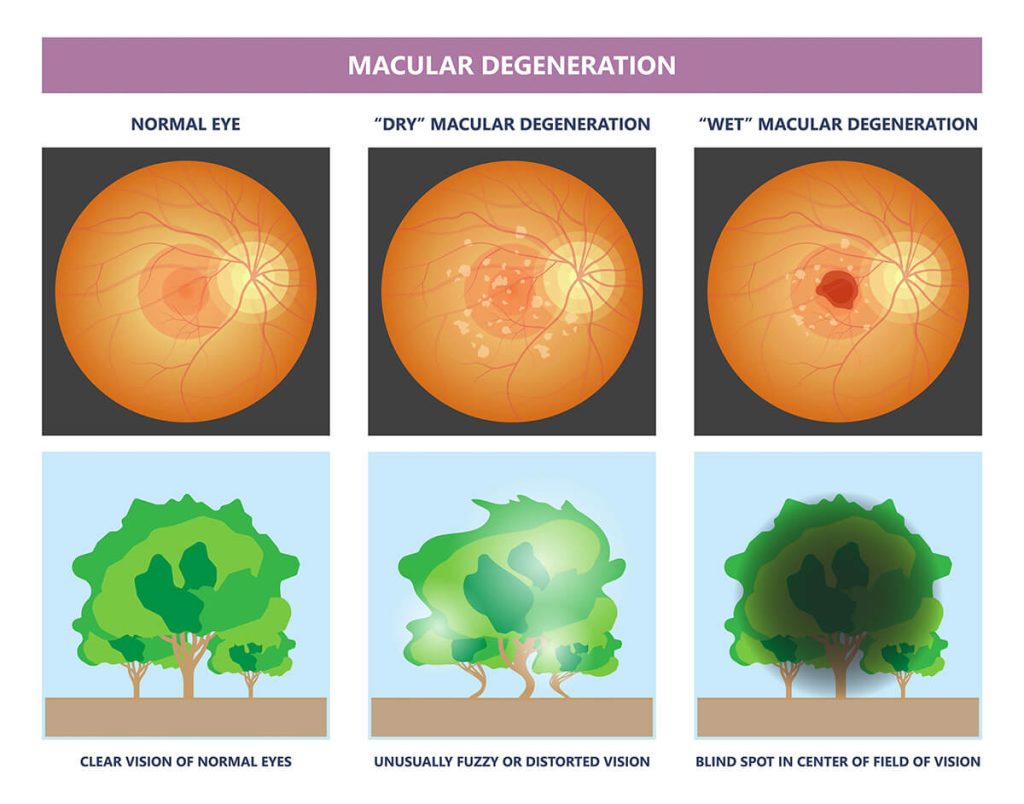
The retina is one of the most energy-demanding tissues in the body due to its high concentration of mitochondria. In age-related macular degeneration (AMD), mitochondrial dysfunction is a key factor in progressive vision loss Macular Society+12PubMed+12Eye Q Optometry |+12Verywell Health. Restoring energy production at the cellular level offers a strategic target.
Photobiomodulation (PBM): Harnessing Red & Near‑Infrared Light
What it is:
Photobiomodulation (PBM), also known as low‑level red/near‑infrared light therapy, uses specific wavelengths (typically 600–1000 nm) that penetrate deep into tissues to stimulate mitochondrial enzymes—especially cytochrome c oxidase—boosting ATP production and reducing inflammation Wikipedia+1Eye Q Optometry |+1.
Application to AMD:
- The Valeda Light Delivery System (by LumiThera) delivers controlled red/NIR light to the retina. In patients with early to intermediate dry AMD, it has been shown to slow disease progression, lessen drusen burden, and improve visual acuity by two lines or more WebMD+9BrightFocus Foundation+9SEED+9.
- An NIH-funded program (LightSight I & III clinical trials) demonstrated enhanced retinal cell energy, healthier tissue, and meaningful improvements in central vision SEED.
Clinical Evidence
- A 2025 Baylor College of Medicine study reviewed published trials of PBM in non-exudative AMD. It found that PBM improved visual function (visual acuity and contrast sensitivity) and reduced anatomical markers such as drusen volume and geographic atrophy PubMed+1macular.org+1.
- A UCL-led study demonstrated that brief exposure (3 minutes/day over two weeks) to 670 nm light enhanced color contrast sensitivity and low-light vision in participants over 40, indicating mitochondrial activation in the retinaVerywell Health+1Wikipedia+1.
Why Energy-Based Treatment Matters
| Problem | Light Therapy Effect |
| Mitochondrial dysfunction | Restores ATP generation and retinal cell energy SEED+2Eye Q Optometry |+2Verywell Health+2 |
| Chronic inflammation | Light therapy downregulates inflammatory pathways |
| Accumulation of drusen & geographic atrophy | Data shows slower progression and reduced drusen after PBM |
These energy-based strategies directly target root causes of retinal degeneration, rather than merely treating symptoms.
Who May Benefit
- People with early or intermediate dry AMD (20/30 to 20/100), not yet candidates for injections or surgerymacular.org+15BrightFocus Foundation+15Clinical Trials Arena+15.
- Individuals seeking a noninvasive, low-risk approach to preserve vision and retinal health.
- Patients open to adjunctive therapy, complementing supplements (like AREDS2) and lifestyle effortsfellow.vision-relief.com+2BrightFocus Foundation+2Verywell Health+2.
Future Directions & Considerations
- Larger and longer trials are ongoing—such as EUROLIGHT and expanded PBM studies—to verify long-term effects and optimal treatment schedules macular.org+4Clinical Trials Arena+4Wikipedia+4.
- PBM is not a cure. Current evidence supports slowing progression, not reversing existing damage or treating wet AMD .
- Use only FDA-authorized devices under clinician guidance to ensure safety and effectiveness BrightFocus Foundation.
Conclusion
Energy-based therapies like photobiomodulation offer a compelling, science-grounded approach to macular degeneration—revitalizing mitochondrial energy, reducing inflammation, and slowing degeneration in a noninvasive manner. Early clinical results are promising, but broader validation is needed to optimize protocols and define long-term impact on vision preservation.
Sources
- BrightFocus Foundation & retina specialists on PBM’s role in slowing dry AMD BrightFocus Foundation+1BrightFocus Foundation+1
- Photobiomodulation in non-exudative AMD: mitochondrial repair, inflammation reduction, visual improvementsPubMed+1Eye Q Optometry |+1
- Macular Society and UCL findings on red light’s effect on retinal energy systems Clinical Trials Arena+11Macular Society+11Verywell Health+11
- NIH-supported LumiThera trials (LightSight I & III) demonstrating PBM benefits BrightFocus Foundation+3SEED+3Clinical Trials Arena+3
- Mechanisms of PBM and low-level light therapy overview Wikipedia
- Safety reminders: FDA authorization and clinician-led use
Leave a Reply